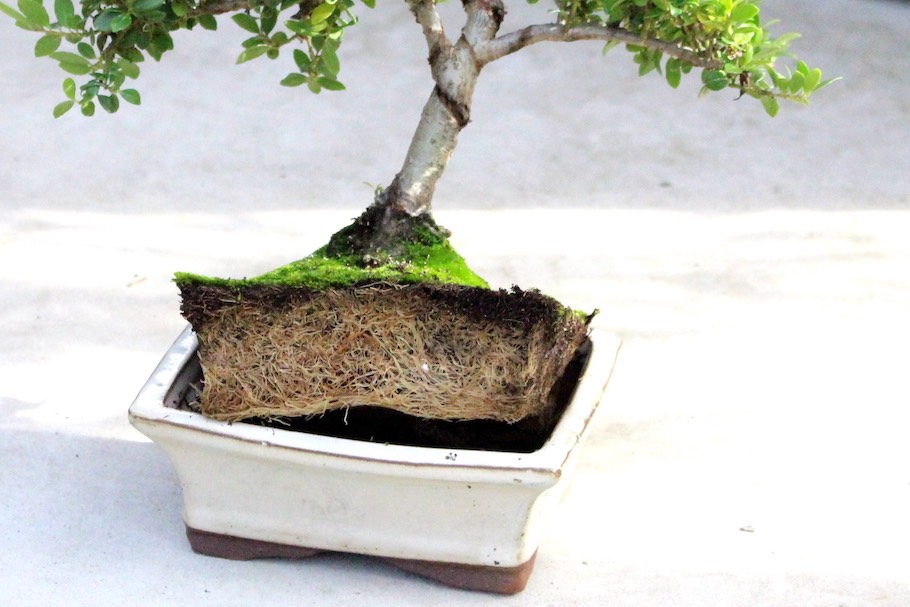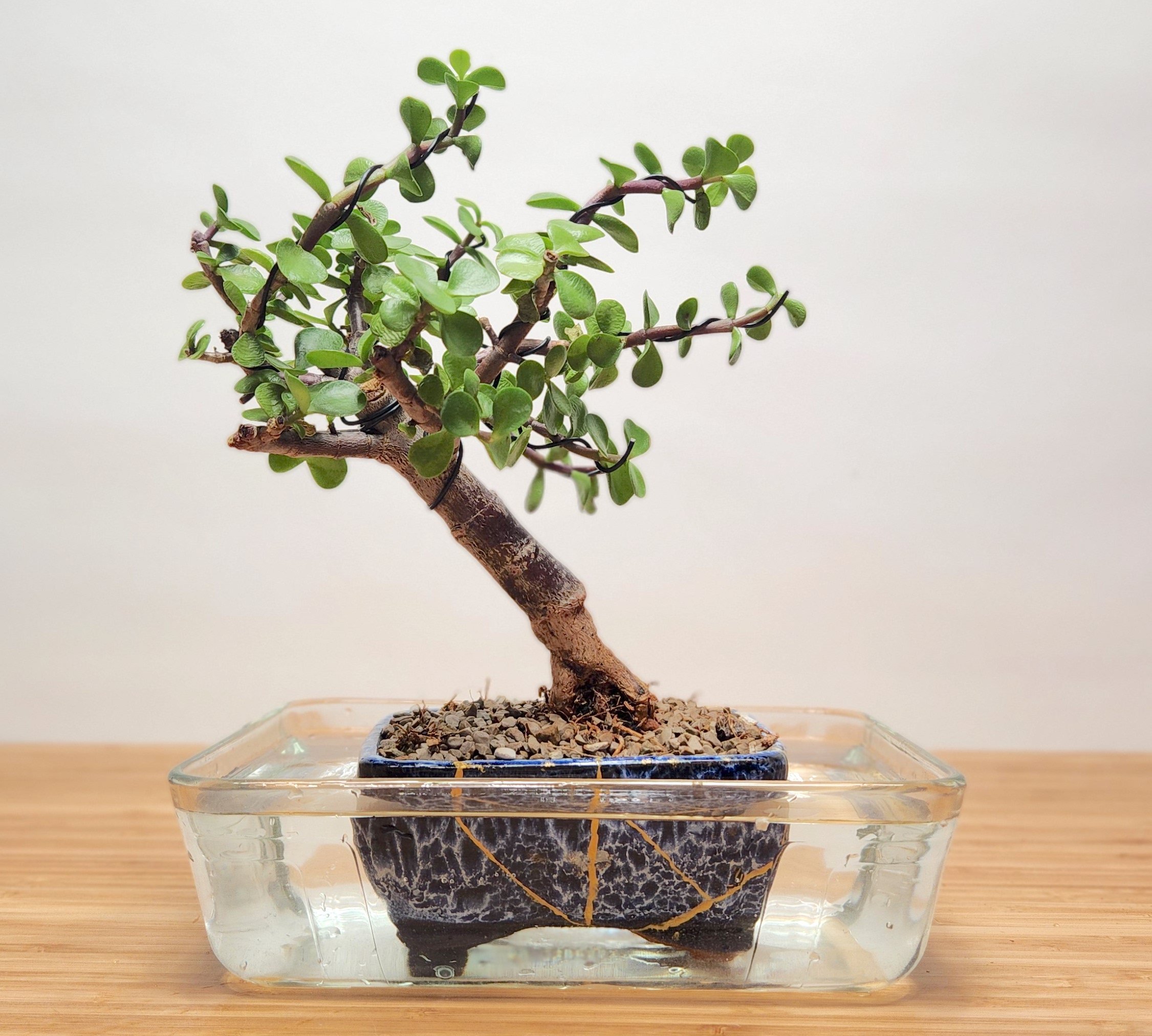Water the bonsai tree by thoroughly soaking the soil until water drains out of the bottom. Water when the topsoil feels dry.
Bonsai trees require attentive care, especially when it comes to watering. Proper hydration is crucial for their health and growth. Overwatering can lead to root rot, while underwatering may cause the tree to wither. To maintain the perfect balance, check the soil’s moisture regularly.
Use a well-draining soil mix to prevent waterlogging. Watering techniques may vary depending on the bonsai species, pot size, and environmental factors. Always observe your bonsai tree for signs of distress or dehydration. By mastering the art of watering, you can ensure your bonsai thrives and remains a stunning miniature representation of nature.

Credit: www.bonsaiempire.com
Introduction To Bonsai Care
Caring for a bonsai tree is a beautiful journey. These tiny trees need special attention. Understanding their needs helps them thrive. One key aspect is watering. Proper watering is crucial for bonsai health.
Art Of Bonsai
The art of bonsai is an ancient practice. It originated in China and Japan. Bonsai means “planted in a container.” The goal is to create a miniature tree. Bonsai trees mimic full-sized trees. This requires patience and skill. Each bonsai tree is unique.
Importance Of Watering
Watering is vital for bonsai survival. Bonsai trees live in small pots. They need regular watering. Too much or too little water can harm them. Proper watering ensures they stay healthy and strong.
| Bonsai Type | Watering Frequency |
|---|---|
| Deciduous | Daily |
| Coniferous | Every other day |
| Tropical | Twice daily |
- Check soil moisture regularly.
- Water deeply but avoid waterlogging.
- Use a fine mist spray for delicate trees.
Follow these tips for a happy bonsai tree. Proper care leads to a beautiful bonsai. Enjoy the journey of bonsai care.
Choosing The Right Water
Choosing the right water for your bonsai tree is crucial. Different water types can affect your tree’s health. Understanding the differences helps in making the best choice.
Tap Water Vs. Rainwater
Tap water is the most convenient option. It is readily available and easy to use. But, it may contain chemicals like chlorine. These chemicals can harm your bonsai tree over time.
Rainwater, on the other hand, is natural and free of chemicals. It is often the best choice for watering bonsai trees. Collecting rainwater can be as simple as placing a bucket outside during a storm.
| Type of Water | Pros | Cons |
|---|---|---|
| Tap Water |
|
|
| Rainwater |
|
|
Benefits Of Filtered Water
Filtered water can be a middle ground between tap water and rainwater. It removes harmful chemicals while being easier to obtain than rainwater. This can be achieved using a simple water filter at home.
Using filtered water ensures your bonsai tree gets clean hydration. It reduces the risk of chemical damage. The tree will absorb nutrients better, leading to healthier growth.
- Removes harmful chemicals
- Easy to obtain
- Promotes healthier tree growth
Watering Techniques
Watering your bonsai tree is crucial for its health and growth. Using the right technique ensures that your bonsai gets the proper amount of moisture. There are two primary methods for watering bonsai trees: top watering and bottom watering. Each technique has its own benefits and can be used based on your tree’s needs.
Top Watering
Top watering is the most common method for watering bonsai trees. This technique involves watering the tree from above, allowing water to flow through the soil and out the drainage holes.
- Fill a watering can with fresh water.
- Water the soil until it is thoroughly moist.
- Ensure water drains out of the bottom holes.
This method helps remove any accumulated salts in the soil. It also allows you to inspect the tree for pests and diseases.
Bottom Watering
Bottom watering involves placing the bonsai pot in a shallow container filled with water. The soil absorbs water through the drainage holes at the bottom of the pot.
- Fill a tray with water about one inch deep.
- Place the bonsai pot in the tray.
- Leave it for 10-15 minutes.
- Remove the pot and allow excess water to drain.
This method ensures even moisture distribution and reduces the risk of overwatering.
| Method | Advantages | Disadvantages |
|---|---|---|
| Top Watering | Removes salts, easy to inspect tree | Risk of uneven watering |
| Bottom Watering | Even moisture distribution | Time-consuming, may miss pests |
Choose the best method based on your bonsai tree’s needs and your routine. Both techniques can help keep your bonsai tree healthy and thriving.

Credit: m.youtube.com
Frequency Of Watering
Understanding the frequency of watering is crucial for a healthy bonsai tree. The right balance of water keeps your bonsai thriving. Both under-watering and over-watering can harm your tree. Let’s explore how often you should water your bonsai tree.
Seasonal Variations
The frequency of watering changes with the seasons. In summer, the bonsai needs more water. The soil dries out quickly due to the heat. Check the soil daily during hot months.
In winter, bonsai trees need less water. They are dormant and use less water. Ensure the soil is moist but not wet. Check the soil every few days.
Daily Monitoring
Daily monitoring helps you know when to water your bonsai. Check the soil with your finger. Insert it about one inch deep.
- If the soil feels dry, it’s time to water.
- If the soil is moist, wait before watering again.
Different bonsai species have different water needs. Learn about your specific bonsai type.
Use a moisture meter for more accuracy. This tool tells you the soil’s moisture level.
Remember, consistent monitoring is the key to a healthy bonsai.
Signs Of Overwatering
Overwatering a bonsai tree can lead to serious issues. Recognizing the signs early can save your bonsai. This section will help you identify the symptoms of overwatering.
Yellowing Leaves
Yellowing leaves are a common sign of overwatering. The bonsai’s roots need oxygen to thrive. Too much water suffocates the roots. This leads to yellow leaves. Monitor your tree closely. If you see yellow leaves, check the soil moisture. Use a moisture meter for accuracy.
Root Rot
Root rot is a severe consequence of overwatering. It occurs when roots stay wet for too long. The roots become mushy and dark. This condition can be fatal to your bonsai. Inspect the roots if you suspect overwatering. Healthy roots are white and firm. Rotting roots are a clear sign to reduce watering.
Quick Tips to Avoid Overwatering:
- Use well-draining soil.
- Water only when the topsoil feels dry.
- Ensure your pot has drainage holes.
| Signs | Description |
|---|---|
| Yellowing Leaves | Leaves turn yellow due to lack of oxygen. |
| Root Rot | Roots become mushy and dark from excess water. |
Preventing Underwatering
Watering your bonsai tree correctly is crucial for its health. Underwatering can lead to dry soil and a stressed tree. To prevent this, it’s important to recognize signs of dry soil and use methods to retain water effectively.
Dry Soil Indicators
- Cracked Soil: The soil surface appears cracked and dry.
- Light Weight: The pot feels unusually light when lifted.
- Leaf Drop: Leaves may turn yellow and fall off.
- Slow Growth: The tree’s growth may become stunted.
Water Retention Methods
Using water retention techniques can help keep your bonsai hydrated.
| Method | Description |
|---|---|
| Mulching | Cover the soil with organic mulch to retain moisture. |
| Proper Soil Mix | Use a soil mix that holds water but drains well. |
| Regular Watering | Water the tree when the topsoil feels slightly dry. |
| Water Trays | Place a water tray under the pot to maintain humidity. |
By recognizing dry soil indicators and using these water retention methods, your bonsai tree will thrive and stay healthy.
Special Considerations
Watering a bonsai tree isn’t just about splashing water. Special considerations are essential to keep your bonsai healthy and thriving. These considerations can vary based on the type of bonsai, its location, and the environmental conditions. Let’s dive into some of these key factors.
Indoor Vs. Outdoor Bonsai
Indoor bonsai trees need a controlled environment. They usually require less water than outdoor bonsai. Indoor trees often face dry indoor air, which can affect their health. Therefore, it’s crucial to monitor their soil moisture closely. Use a moisture meter for accurate results.
Outdoor bonsai trees face changing weather conditions. Rain, sun, and wind can all impact their water needs. Outdoor bonsai usually need more frequent watering. Check the soil daily during hot or windy days. Ensure the water reaches the roots, not just the surface.
Humidity Levels
Humidity plays a vital role in bonsai health. Indoor bonsai often suffer from low humidity. Use a humidity tray filled with water beneath the pot. This helps maintain a humid environment around the tree. Misting the leaves can also help.
Outdoor bonsai usually receive enough humidity from the environment. But during dry seasons, you might need to provide extra moisture. Grouping bonsai trees together can help create a humid micro-environment. It’s a simple yet effective technique.
| Consideration | Indoor Bonsai | Outdoor Bonsai |
|---|---|---|
| Watering Frequency | Less frequent | More frequent |
| Humidity Control | Use humidity tray and misting | Natural environment usually sufficient |
| Environmental Impact | Dry indoor air | Weather conditions |
- Always check soil moisture before watering.
- Adjust watering based on seasons and weather.
- Use appropriate tools for precise watering.

Credit: bonsaibar.com
Additional Tips And Tricks
Watering a bonsai tree correctly can be tricky. To help, here are some additional tips and tricks. These tips will ensure your bonsai tree stays healthy and vibrant.
Using Moisture Meters
Moisture meters are great tools for bonsai care. They tell you if the soil is dry or wet. Insert the meter into the soil. Check the reading. If the meter shows dry, water your bonsai.
Here are some benefits of using moisture meters:
- They prevent overwatering.
- They ensure the soil stays moist.
- They help maintain the right moisture level.
Creating A Watering Schedule
Creating a watering schedule is essential. It helps keep your bonsai tree healthy. Here is a simple schedule to follow:
| Season | Watering Frequency |
|---|---|
| Spring | Every 2-3 days |
| Summer | Every day |
| Fall | Every 2-3 days |
| Winter | Once a week |
Remember to adjust the schedule based on your bonsai tree’s needs. Check the soil often. If it’s dry, water it.
Here’s a quick checklist for creating your schedule:
- Observe your bonsai tree.
- Check the soil daily.
- Adjust watering based on soil moisture.
- Use a moisture meter for accuracy.
Conclusion
Watering your bonsai tree properly ensures its health and longevity. Use the right amount of water consistently. Check soil moisture regularly to avoid overwatering. Remember, well-watered bonsai trees thrive and grow beautifully. Follow these simple steps to keep your bonsai tree vibrant and healthy.
Happy gardening!

